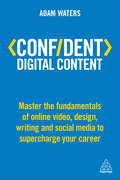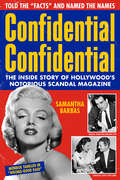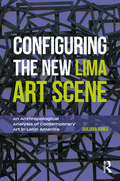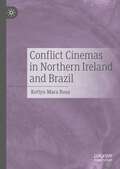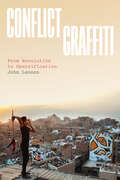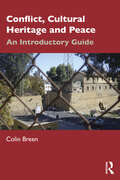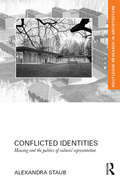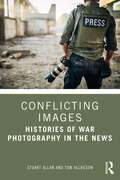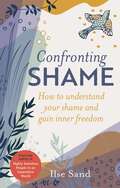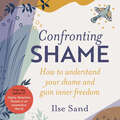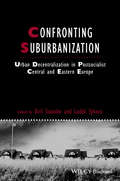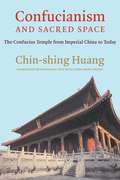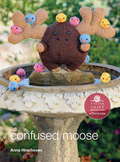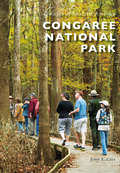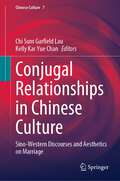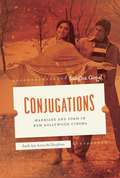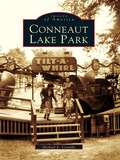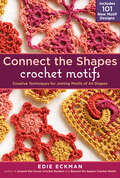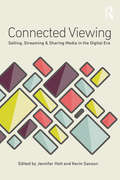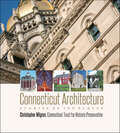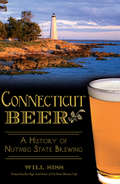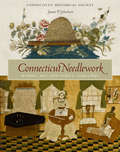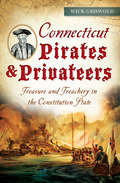- Table View
- List View
Confident Digital Content: Master the Fundamentals of Online Video, Design, Writing and Social Media to Supercharge Your Career (Confident Series)
by Adam Waters<p><i>Confident Digital Content</i> gives you the opportunity to become digitally multi-skilled and learn the fundamentals of the most important types of digital creativity. Whatever your career path, being able to produce exciting and creative content online, whether through video, design, digital journalism or social media, can supercharge your professional career and empower your entrepreneurial pursuits. <p><i>Confident Digital Content</i>teaches you valuable hard skills, including how to create and upload great video content, graphic design, photography for social media, community management, digital strategy and metrics, and helps you learn them through practical exercises in every chapter. It also provides insightful guidance on how to boost your career and employability by honing your leadership, creativity and entrepreneurial skills in the world of digital. Case studies from inspiring individuals at organizations including CNN International, Mumsnet, Bunster's Hot Sauce, HuffPost UK, and Crocstar Media show you real world examples of excellent digital content in practice. This book is your ultimate guide to achieving the technical proficiency and confidence to start an inspiring digital career path, whether your ambition is to rise to the top of your chosen industry, be a successful freelancer or become an entrepreneur.</p>
Confidential Confidential: The Inside Story of Hollywood's Notorious Scandal Magazine
by Samantha BarbasIn the 1950s, Confidential magazine, America's first celebrity scandal magazine, revealed Hollywood stars' secrets, misdeeds, and transgressions in gritty, unvarnished detail. Deploying a vast network of tipsters to root out scandalous facts about the stars, including their sexual affairs, drug use, and sexuality, publisher Robert Harrison destroyed celebrities' carefully constructed images and built a media empire. Confidential became the bestselling magazine on American newsstands in the 1950s, surpassing Time, Life, and the Saturday Evening Post. Confidential's spectacular rise was followed by an equally spectacular fall. Stars filed multimillion dollar libel suits against the magazine, and the state of California, prodded by the film studios, prosecuted its publisher for obscenity, culminating in a famous, star-studded Los Angeles trial in 1957. The lawsuits forced Confidential to end its scandalmongering, and stopped printing its sleazy gossip in 1958. However, the magazine's legacy lives on in our culture's obsession with gossip and celebrity scandal. Confidential's success marked the end of an era of hush-hush—of secrets, closets, and sexual taboos—and the beginning of our age of tell-all exposure. It was the forerunner of People, the National Enquirer, and TMZ.com, and was more outrageous and raunchy than all of them.
Configuring the New Lima Art Scene: An Anthropological Analysis of Contemporary Art in Latin America
by Giuliana BoreaThis book examines the contemporary art world in Latin America from an anthropological perspective and recognises the recent reconfiguration of Lima's art scene. Giuliana Borea traces the practices of artists, curators, collectors, art dealers and museums, identifying three key moments in this reconfiguration of contemporary art in Lima: artistic explorations and new curatorial narratives; museum reinforcement and the strengthening of Latin American art networks; and of the rise of the art market. In so doing, Borea highlights the different actors that come into play in activating and de-activating, directions and imaginations. The book exposes the practices of the local, the global, indigeneity and politics in the arts, and reveals that the strengthening of the Lima art scene has fostered the expansion of dominant art views and formats mobilised by transnational elite actors. Featuring analytical chapters interspersed with personal stories, Borea's book presents an in-depth analysis of a specific art scene to open up a new way of understanding contemporary art practices in relation to globalisation, neoliberalism and the city.
Conflict Cinemas in Northern Ireland and Brazil
by Ketlyn Mara RosaThis book focuses on the analysis of sensorial representations of violent images in contemporary films that portray embodied violation in urban environments of street clashes and prisons in Northern Ireland and Brazil during the late twentieth century. There is an emphasis on the representation of senses and how they play a significant role in structuring narratives and mapping the cinematic landscapes of conflict. Whether on the streets and prisons of Belfast, Derry, São Paulo or Rio, the attention is on the endangered body and its fragility or strength. Analyzing films through the novel framework of sensorial perspective enables the understanding of urban and prison landscapes as part of a somatic geography that affects the corporeal engagement of the participants. As a multicultural study, this is an essential book for those interested in the relationship between cinema and history while taking into consideration the interactive roles of the senses and perception.
Conflict Graffiti: From Revolution to Gentrification
by John LennonThis study examines the waves of graffiti that occur before, during, and after a conflict—important tools of political resistance that make protest visible and material. Graffiti makes for messy politics. In film and television, it is often used to create a sense of danger or lawlessness. In bathroom stalls, it is the disembodied expression of gossip, lewdness, or confession. But it is also a resistive tool of protest, making visible the disparate voices and interests that come together to make a movement. In Conflict Graffiti, John Lennon dives into the many permutations of graffiti in conflict zones—ranging from the protest graffiti of the Black Lives Matter movement in Ferguson and the Tahrir Square demonstrations in Egypt, to the tourist-attraction murals on the Israeli Separation Wall and the street art that has rebranded Detroit and post-Katrina New Orleans. Graffiti has played a crucial role in the revolutionary movements of these locales, but as the conflict subsides a new graffiti and street art scene emerges—often one that ushers in postconflict consumerism, gentrification, militarization, and anesthetized forgetting. Graffiti has an unstable afterlife, fated to be added to, transformed, overlaid, photographed, reinterpreted, or painted over. But as Lennon concludes, when protest movements change and adapt, graffiti is also uniquely suited to shapeshift with them.
Conflict Graffiti: From Revolution to Gentrification
by John LennonThis study examines the waves of graffiti that occur before, during, and after a conflict—important tools of political resistance that make protest visible and material. Graffiti makes for messy politics. In film and television, it is often used to create a sense of danger or lawlessness. In bathroom stalls, it is the disembodied expression of gossip, lewdness, or confession. But it is also a resistive tool of protest, making visible the disparate voices and interests that come together to make a movement. In Conflict Graffiti, John Lennon dives into the many permutations of graffiti in conflict zones—ranging from the protest graffiti of the Black Lives Matter movement in Ferguson and the Tahrir Square demonstrations in Egypt, to the tourist-attraction murals on the Israeli Separation Wall and the street art that has rebranded Detroit and post-Katrina New Orleans. Graffiti has played a crucial role in the revolutionary movements of these locales, but as the conflict subsides a new graffiti and street art scene emerges—often one that ushers in postconflict consumerism, gentrification, militarization, and anesthetized forgetting. Graffiti has an unstable afterlife, fated to be added to, transformed, overlaid, photographed, reinterpreted, or painted over. But as Lennon concludes, when protest movements change and adapt, graffiti is also uniquely suited to shapeshift with them.
Conflict Graffiti: From Revolution to Gentrification
by John LennonThis study examines the waves of graffiti that occur before, during, and after a conflict—important tools of political resistance that make protest visible and material. Graffiti makes for messy politics. In film and television, it is often used to create a sense of danger or lawlessness. In bathroom stalls, it is the disembodied expression of gossip, lewdness, or confession. But it is also a resistive tool of protest, making visible the disparate voices and interests that come together to make a movement. In Conflict Graffiti, John Lennon dives into the many permutations of graffiti in conflict zones—ranging from the protest graffiti of the Black Lives Matter movement in Ferguson and the Tahrir Square demonstrations in Egypt, to the tourist-attraction murals on the Israeli Separation Wall and the street art that has rebranded Detroit and post-Katrina New Orleans. Graffiti has played a crucial role in the revolutionary movements of these locales, but as the conflict subsides a new graffiti and street art scene emerges—often one that ushers in postconflict consumerism, gentrification, militarization, and anesthetized forgetting. Graffiti has an unstable afterlife, fated to be added to, transformed, overlaid, photographed, reinterpreted, or painted over. But as Lennon concludes, when protest movements change and adapt, graffiti is also uniquely suited to shapeshift with them.
Conflict, Cultural Heritage and Peace: An Introductory Guide
by Colin BreenConflict, Cultural Heritage and Peace offers a series of conceptual and applied frameworks to help understand the role cultural heritage plays within conflict and the potential it has to contribute to positive peacebuilding and sustainable development in post-conflict societies. Designed as a resource guide, this general volume introduces the multiple roles cultural heritage plays through the conflict cycle from its onset, subsequent escalation and through to resolution and recovery. In its broadest sense, it questions what role cultural heritage plays within conflict, how cultural heritage is used in the construction and justification of conflict narratives, how are these narratives framed and often manipulated to support particular perspectives, and how we can develop better understandings of cultural heritage and work towards the better protection of cultural heritage resources during conflict. It moves beyond the protection paradigm and recognises that cultural heritage can contribute to building peace and reconciliation in post-conflict environments. The study offers a conceptual and operational framework to understand the roles cultural heritage plays within conflict cycles, how it can be targeted during war, and the potential cultural heritage has in positive peacebuilding across the conflict lifecycle. Conflict, Cultural Heritage, and Peace offers an invaluable introduction to cultural heritage at all stages in conflict scenarios which will benefit students, researchers and practitioners in the field of heritage, environment, peace and conflict studies.
Conflicted Identities: Housing and the Politics of Cultural Representation (Routledge Research in Architecture)
by Alexandra StaubNation-states have long used representational architecture to create symbolic identities for public consumption both at home and abroad. Government buildings, major ensembles and urban plans have a visibility that lends them authority, while their repeated portrayals in the media cement their image as icons of a shared national character. Existing in tandem with this official self, however, is a second, often divergent identity, represented by the vast realm of domestic space defined largely by those who occupy it as well as those with a vested interest in its cultural meaning. Using both historical inquiry and visual, spatial and film analysis, this book explores the interaction of these two identities, and its effect on political control, class status, and gender roles. Conflicted Identities examines the politicization of both public and domestic space, especially in societies undergoing rapid cultural transformation through political, social or economic expansion or restructuring, when cultural identity is being rapidly "modernized", shifted, or realigned to conform to new demands. Using specific examples from a variety of national contexts, the book examines how vernacular housing, legislation, marketing, and media influence a large, but often underexposed domestic culture that runs parallel to a more publicly represented one. As a case in point, the book examines West Germany from the end of World War II to the early 1970s to probe more deeply into the mechanisms of such cultural dichotomy. On a national level, post-war West Germany demonstratively rejected Nazi-era values by rebuilding cities based on interwar modernist tenets, while choosing a decidedly modern and transparent architecture for high-visibility national projects. In the domestic realm, government, media and everyday citizens countered this turn to state-sponsored modernism by embracing traditional architectural aesthetics and housing that encouraged patriarchal family structures. Written for readers interested in cultural theory, history, and the politics of space as well as those engaged with architecture and the built environment, Conflicted Identities provides an engaging new perspective on power and identity as they relate to architectural settings.
Conflicting Images: Histories of War Photography in the News
by Stuart Allan Tom AllbesonIn contrast with historical examinations centring the evolving role of the war correspondent, Conflicting Images focuses on the contribution of photographers and photojournalists, providing an evaluative appraisal of war photography in the news and its development from the nineteenth century to the twenty-first century.Stuart Allan and Tom Allbeson critically explore diverse genres of war photography across a broad historical sweep, encompassing events from the Crimean War (1853–56) and the Civil War in the United States (1861–65) up to and including conflicts unfolding in Syria and Ukraine. This book reflects on the relevance of different types of warfare to visual reporting, from colonial conquest via trench warfare and aerial bombardment, to the ideological dimensions of the Cold War, and ‘embedding’ and ‘winning hearts and minds’ during the ‘War on Terror’ and its aftermath. In pinpointing illustrative examples, the authors examine changing dynamics of production, dissemination, and public engagement. Readers will come to understand how current efforts to rethink the future of war photography in a digital age can benefit from a close and careful consideration of war photography’s origins, early development, and gradual, uneven transformation over the years. Conflicting Images aims to invigorate ongoing enquires and inspire new, alternative trajectories for future research and practice.This book is recommended reading for researchers and advanced students of visual journalism and conflict reporting.
Confronting Shame: How to Understand Your Shame and Gain Inner Freedom
by Ilse SandShame might be far from the first thing that comes to mind when you think about what's causing your problems. Shame is hidden, and rarely something we talk about, but it can underlie challenges that we deal with on a daily basis, including anxiety, depression and low self-esteem. This book will help you understand what shame is, how it arises and, in turn, how to overcome it. With exercises in each chapter, it provides tools to reflect on, confront and free yourself from shame. The book also includes a questionnaire to assess how much shame impacts you.Be kind to yourself and rediscover your empathy for yourself with Confronting Shame.
Confronting Shame: How to Understand Your Shame and Gain Inner Freedom
by Ilse SandFrom the bestselling author of Highly Sensitive People in an Insensitive WorldShame might be far from the first thing that comes to mind when you think about what's causing your problems. Shame is hidden, and rarely something we talk about, but it can underlie challenges that we deal with on a daily basis, including anxiety, depression and low self-esteem. This book will help you understand what shame is, how it arises and, in turn, how to overcome it. With exercises in each chapter, it provides tools to reflect on, confront and free yourself from shame. The book also includes a questionnaire to assess how much shame impacts you.Be kind to yourself and rediscover your empathy for yourself with Confronting Shame.
Confronting Suburbanization: Urban Decentralization in Postsocialist Central and Eastern Europe (IJURR Studies in Urban and Social Change Book Series)
by Kiril Stanilov Luděk SýkoraThis fascinating book explains the processes of suburbanization in the context of post-socialist societies transitioning from one system of socio-spatial order to another. Case studies of seven Central and Eastern Europe city regions illuminate growth patterns and key conditions for the emergence of sprawl. Breaks new ground, offering a systematic approach to the analysis of the global phenomenon of suburbanization in a post-socialist context Tracks the boom of the post-socialist suburbs in seven CEE capital city regions – Budapest, Ljubljana, Moscow, Prague, Sofia, Tallinn, and Warsaw Situates the experience of the CEE countries in the broader context of global urban change Case studies examine the phenomenon of suburbanization along four main vectors of analysis related to development patterns, driving forces, consequences and impacts, and management of suburbanization Highlights the critical importance of public policies and planning on the spread of suburbanization
Confucianism and Sacred Space: The Confucius Temple from Imperial China to Today
by Chin-shing HuangTemples dedicated to Confucius are found throughout China and across East Asia, dating back over two thousand years. These sacred and magnificent sanctuaries hold deep cultural and political significance.This book brings together studies from Chin-shing Huang’s decades-long research into Confucius temples that individually and collectively consider Confucianism as religion. Huang uses the Confucius temple to explore Confucianism both as one of China’s “three religions” (with Buddhism and Daoism) and as a cultural phenomenon, from the early imperial era through the present day. He argues for viewing Confucius temples as the holy ground of Confucianism, symbolic sites of sacred space that represent a point of convergence between political and cultural power. Their complex histories shed light on the religious nature and character of Confucianism and its status as official religion in imperial China. Huang examines topics such as the political and intellectual elements of Confucian enshrinement, how Confucius temples were brought into the imperial ritual system from the Tang dynasty onward, and why modern Chinese largely do not think of Confucianism as a religion.A nuanced analysis of the question of Confucianism as religion, Confucianism and Sacred Space offers keen insights into Confucius temples and their significance in the intertwined intellectual, political, social, and religious histories of imperial China.
Confused Moose: E-Pattern from Knitting Mochimochi (Potter Craft ePatterns)
by Anna HrachovecKnitting instructions.
Congaree National Park (Images of Modern America)
by John E. CelyLocated in central South Carolina, only a few miles from the capital city of Columbia, Congaree National Park is the largest old-growth bottomland hardwood forest left in the country and one of the most biologically diverse parks within the national park system. Nearly 100 species of trees have been documented within the park, almost as many as in the entire Pacific Northwest. The park has one of the tallest hardwood forests anywhere in the temperate world and features numerous trees of record-setting proportions, a distinction that has earned it the name �Forest of Champions.� This book discusses the early history of the area that later became the Congaree National Park, shows efforts to protect it from logging by a citizen�s grassroots campaign, traces the park�s early beginnings and development, and illustrates some of the park�s notable flora and fauna.
Conjugal Relationships in Chinese Culture: Sino-Western Discourses and Aesthetics on Marriage (Chinese Culture #7)
by Kelly Kar Yue Chan Chi Sum Garfield LauThis book reviews the presentation of conjugal relationships in Chinese culture and their perception in the West. It explores the ways in which the act of marriage is represented/misrepresented in different literary genres, as well as in cultural adaptations. It looks at the gendered characteristics at play that affect conjugal relationships in Chinese societal practices more widely. It also distinguishes between the essential features that give rise to nuptial arrangements from the Chinese perspective, looking at what in which Sino and/or Western mentalities differ in terms of notions of autonomy in marriage. It excavates the extent to which marriage is constituted in forms of transaction between female and male bodies and asks under what circumstances wedding ceremonies constitute archetypal or counter-archetypal notions in pre-modern and modern society. Authors cover a range of fascinating cultural topics, such as posthumous marriage (necrogamy) as an ancient and popular folk culture from the perspective of Confucian ideology, as well as looking at marriage from ancient to present times, duty and rights in conjugal relations, inter-racial and inter-cultural marriage, widowhood in Confucian ideology, issues of legitimacy in marriage and concubinage, the taboos surrounding divorce and re-marriage, and conjugal violence. The book serves to revisit the cultural connections between marriage and various art forms, including literature, film, theatre, and other adaptations. It is a rich intellectual resource for scholars and students researching the historical roots, cultural interpretations, and evolving aspects of marriage as shown in literature, art, and culture.
Conjugations
by Sangita GopalBollywood movies have been long known for their colorful song-and-dance numbers and knack for combining drama, comedy, action-adventure, and music. But when India entered the global marketplace in the early 1990s, its film industry transformed radically. Production and distribution of films became regulated, advertising and marketing created a largely middle-class audience, and films began to fit into genres like science fiction and horror. In this bold study of what she names New Bollywood, Sangita Gopal contends that the key to understanding these changes is to analyze films' evolving treatment of romantic relationships. Gopalargues that the form of the conjugal duo in movies reflects other social forces in India's new consumerist and global society. She takes a daring look at recent Hindi films and movie trends--the decline of song-and-dance sequences, the upgraded status of the horror genre, and the rise of the multiplex and multi-plot--to demonstrate how these relationships exemplify different formulas of contemporary living. A provocative account of how cultural artifacts can embody globalization's effects on intimate life, Conjugations will shake up the study of Hindi film.
Conneaut Lake Park
by Michael E. CostelloIn 1877, a humble boat landing was constucted on Conneaut Lake, Pennsylvania's largest natural lake. Colonel Frank Mantor, a visionary, discovered and purchased the property and convinced investors from the Pittsburgh, Shenango, and Lake Erie Railroad to extend the railroad line to a newly built resort on the site. In 1892, Exposition Park--a permanent fair exhibiting machinery and livestock--was founded. Amusement rides wereadded alongside hotels, cottages, restaurants, and other businesses. The resort grew into an amusement park and was renamed Conneaut Lake Park in 1920. Conneaut Lake Park illustrates the evolution of this lakeside resort with images of long-gone attractions such as the Hotel Elmwood, Temple of Music, Jungle Cruise, Fairyland Forest, and Wild Mouse. Recent favorites such as the Blue Streak, Tumble Bug, Ultimate Trip, and Devil's Den are also included.
Connect the Shapes Crochet Motifs: Creative Techniques for Joining Motifs of All Shapes
by Edie EckmanConnecting beautiful motifs can be just as enjoyable as crocheting them. Edie Eckman’s creative joining techniques allow you to easily combine multiples to form a whole new pattern, from lacy links, swirls, radiants, and wheels to three-dimensional effects. <P><P>Step-by-step instructions, detailed photography, and innovative stitching charts ensure success. With 100 brand-new motif designs at your fingertips, you’ll be free to explore limitless variations and capture your own personal style.
Connected Viewing: Selling, Streaming, & Sharing Media in the Digital Age
by Jennifer Holt Kevin SansonAs patterns of media use become more integrated with mobile technologies and multiple screens, a new mode of viewer engagement has emerged in the form of connected viewing, which allows for an array of new relationships between audiences and media texts in the digital space. This exciting new collection brings together twelve original essays that critically engage with the socially-networked, multi-platform, and cloud-based world of today, examining the connected viewing phenomenon across television, film, video games, and social media. The result is a wide-ranging analysis of shifting business models, policy matters, technological infrastructure, new forms of user engagement, and other key trends affecting screen media in the digital era. Connected Viewing contextualizes the dramatic transformations taking place across both media industries and national contexts, and offers students and scholars alike a diverse set of methods and perspectives for studying this critical moment in media culture.
Connecticut Architecture: Stories of 100 Places (Garnet)
by Christopher WigrenConnecticut boasts some of the oldest and most distinctive architecture in New England, from Colonial churches and Modernist houses to refurbished nineteenth-century factories. The state's history includes landscapes of small farmsteads, country churches, urban streets, tobacco sheds, quiet maritime villages, and town greens, as well as more recent suburbs and corporate headquarters. In his guide to this rich and diverse architectural heritage, Christopher Wigren introduces readers to 100 places across the state. Written for travelers and residents alike, the book features buildings visible from the road.Featuring more than 200 illustrations, the book is organized thematically. Sections include concise entries that treat notable buildings, neighborhoods, and communities, emphasizing the importance of the built environment and its impact on our sense of place. The text highlights key architectural features and trends and relates buildings to the local and regional histories they represent.There are suggestions for further reading and a helpful glossary of architectural termsA project of the Connecticut Trust for Historic Preservation, the book reflects more than 30 years of fieldwork and research in statewide architectural survey and National Register of Historic Places programs.
Connecticut Beer: A History of Nutmeg State Brewing (American Palate)
by Will Siss Ron PageThe history of the frothy beverage in Connecticut dates back to early colonists, who used it to quench their thirst in the absence of clean drinking water. So integral was beer to daily life in the colony that government officials and militiamen congregated in taverns like the General Wolfe to talk laws and business over pints of ale. Over the next two centuries, the number of breweries rose and then declined, especially after Prohibition. It was not until the 1980s that homebrewers brought this vital Nutmeg State tradition back to life, hatching the likes of New England and Cottrell Brewing Companies, as well as brewpubs including City Steam and Southport Brewing. More recently, small operations with one or two people, such as Relic and Beer'd, are changing the landscape again. Connecticut beer writer Will Siss introduces readers to the hardworking people who keep the breweries and beer bars inviting and the hoppy history alive.
Connecticut Needlework: Women, Art, and Family, 1740–1840
by Kate Steinway Susan P. SchoelwerConnecticut women have long been noted for their creation of colorful and distinctive needlework, including samplers and family registers, bed rugs and memorial pictures, crewel-embroidered bed hangings and garments, silk-embroidered pictures of classical or religious scenes, quilted petticoats and bedcovers, and whitework dresses and linens. This volume offers the first regional study, encompassing the full range of needle arts produced prior to 1840. Seventy entries showcase more than one hundred fascinating examples--many never before published--from the Connecticut Historical Society's extensive collection of this early American art form. Produced almost exclusively by women and girls, the needle arts provide an illuminating vantage point for exploring early American women's history and education, including family-based traditions predating the establishment of formal academies after the American Revolution. Extensive genealogical research reveals unseen family connections linking various types of needlework, similar to the multi-generational male workshops documented for other artisan trades, such as woodworking or metalsmithing. Photographs of stitches, reverse sides, sketches, design sources, and related works enhance our understanding and appreciation of this fragile art form and the talented women who created it. An exhibition of needlework in this book will be held at the Connecticut Historical Society in late fall, 2010. Funding for this project has been provided by the Coby Foundation, Ltd., and the National Endowment for the Arts.
Connecticut Pirates & Privateers: Treasure and Treachery in the Constitution State
by Wick GriswoldThe waters, inlets and islands of Connecticut once swarmed with fabled corsairs like Captain Kidd and Blackbeard who may have buried their booty in Constitution State soil. In colonial times and through the nineteenth century, over one hundred privateers used the Connecticut River and waterways as a home port, influencing the geopolitics of the time. During the Revolutionary War, the infamous traitor Benedict Arnold attempted to destroy the state's privateer fleet. In 1779, Captain Elisha Hinman cleverly devised a system that allowed the large privateer ship Governor Trumbull to avoid enemy attack by becoming super-buoyant and passing over dangerous shoals. Wick Griswold uncovers the swashbuckling stories of Connecticut's pirates and privateers, brimming with historical facts and local myths.
